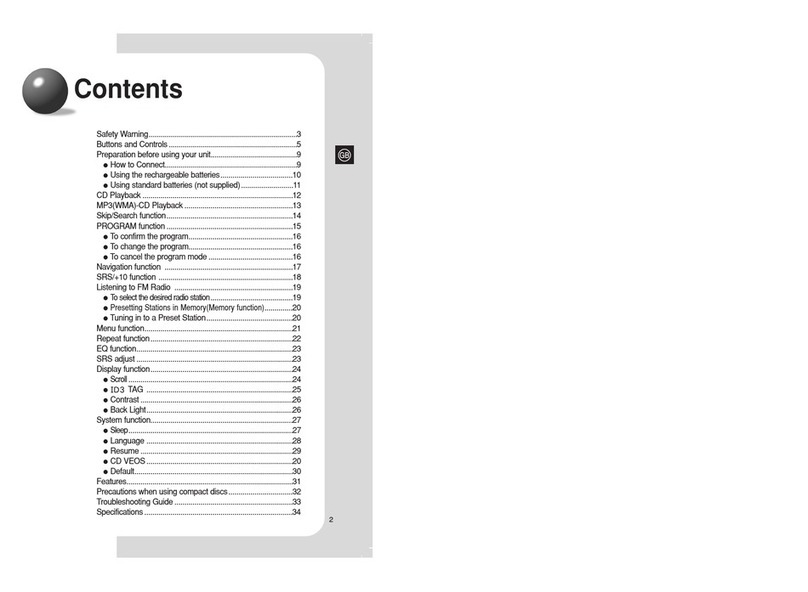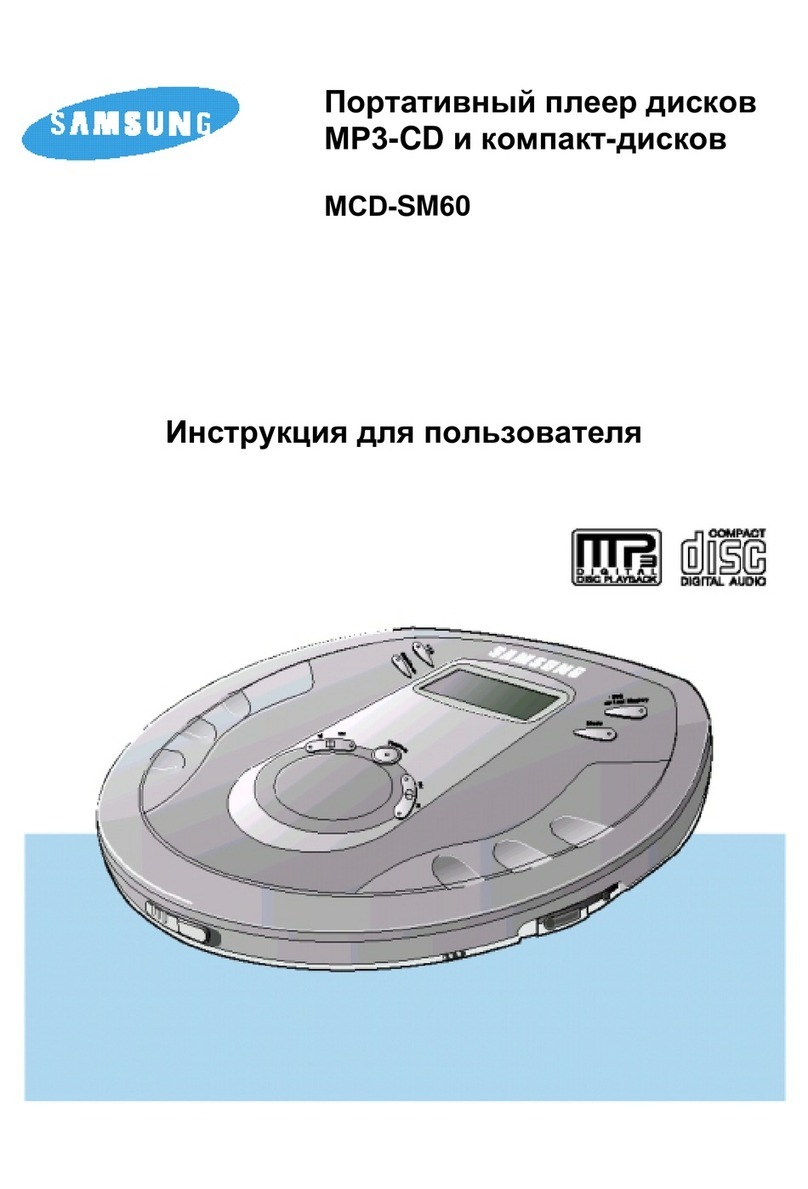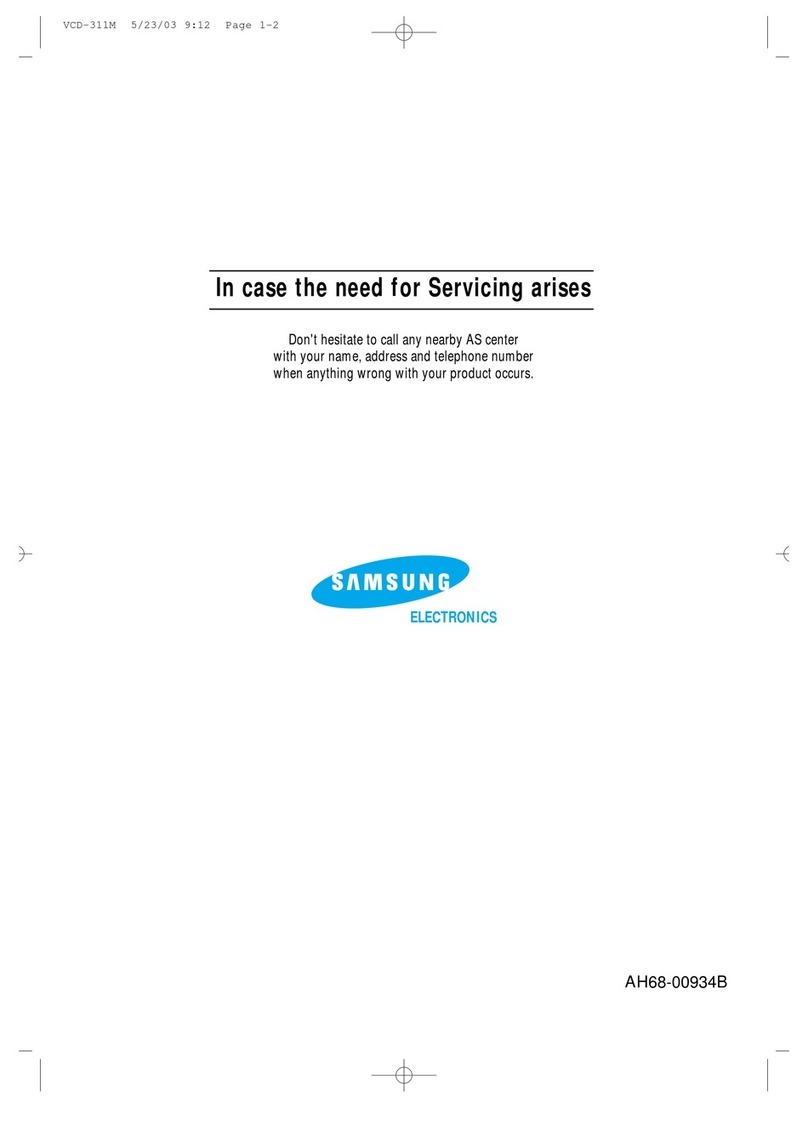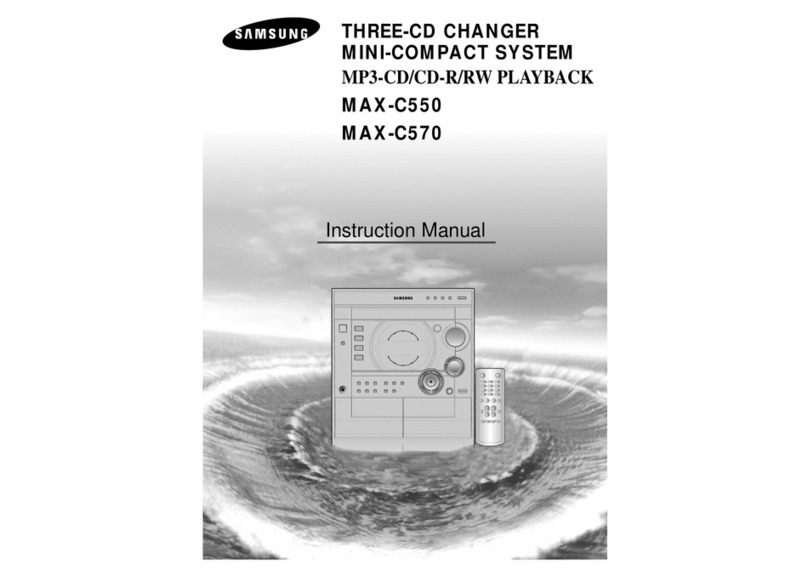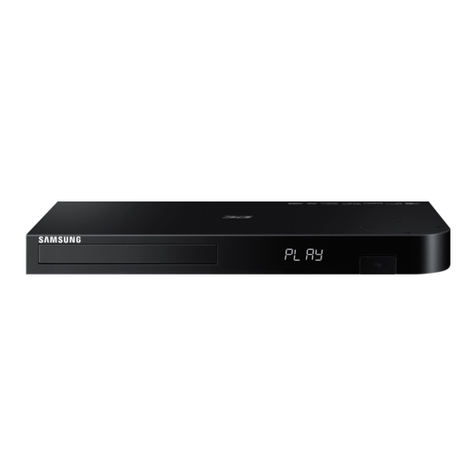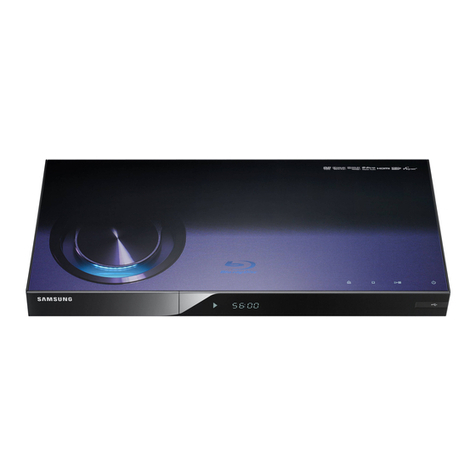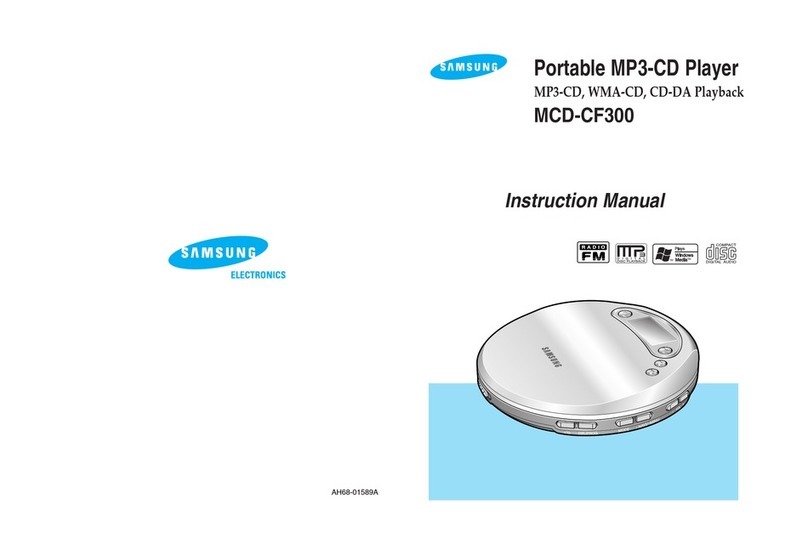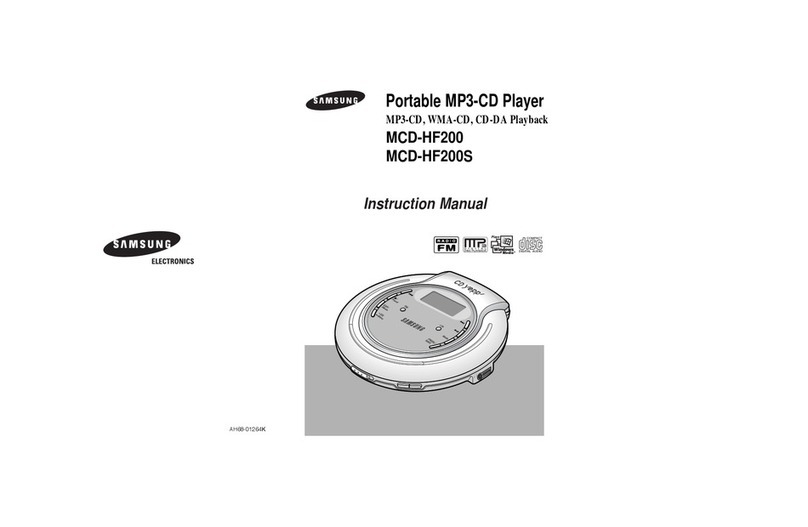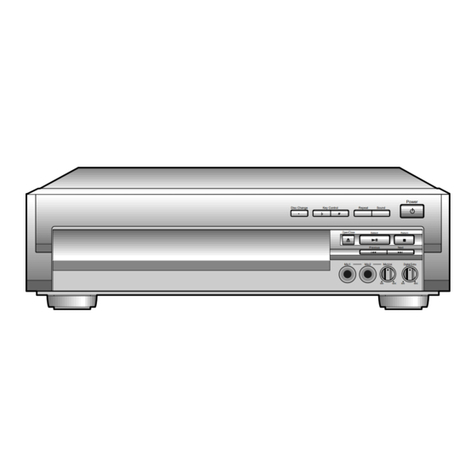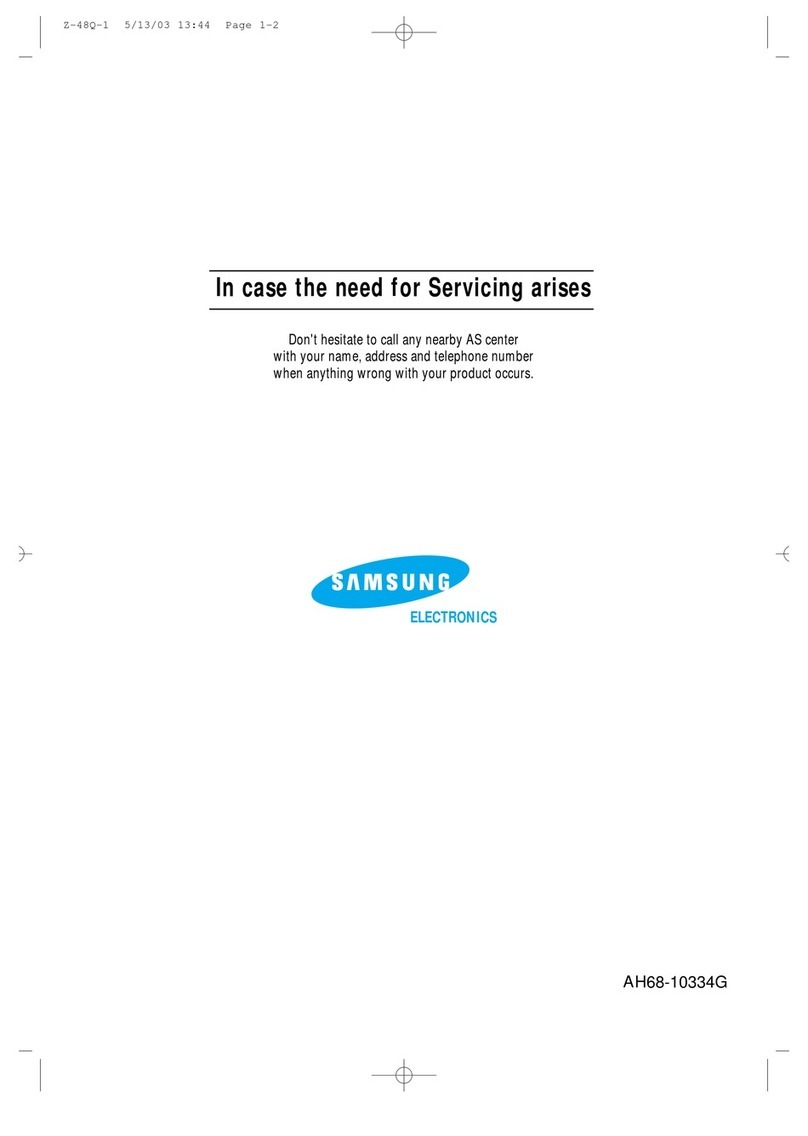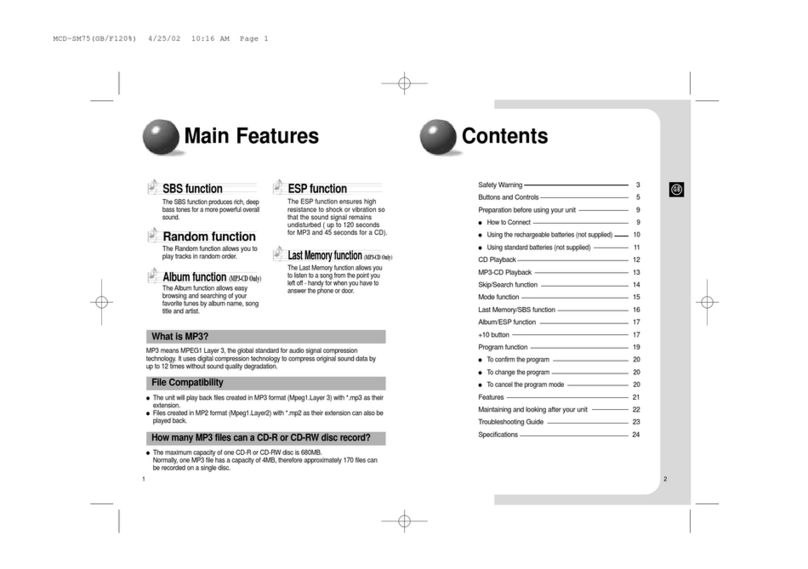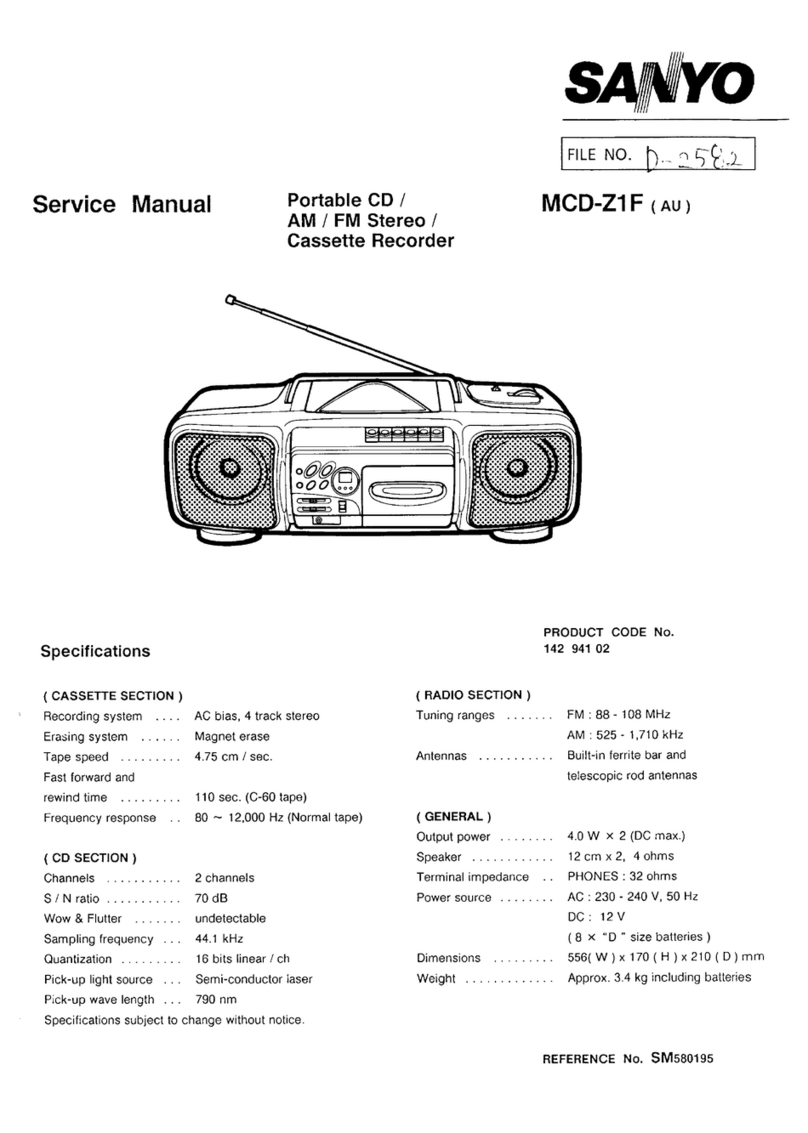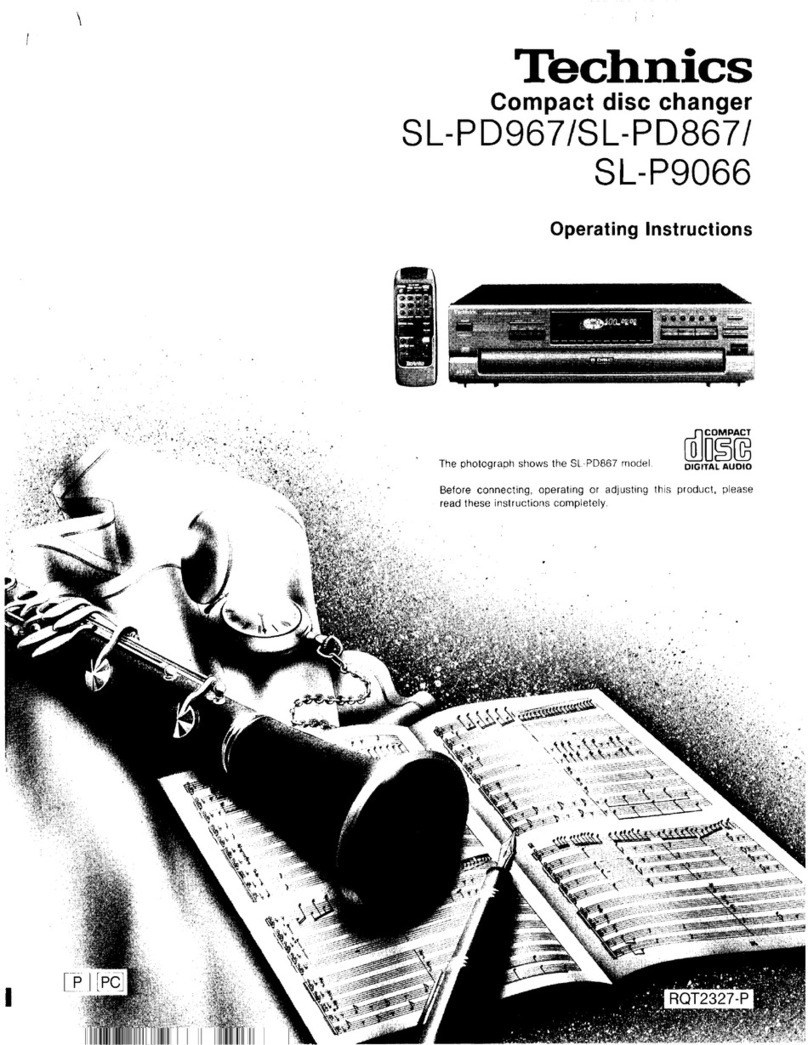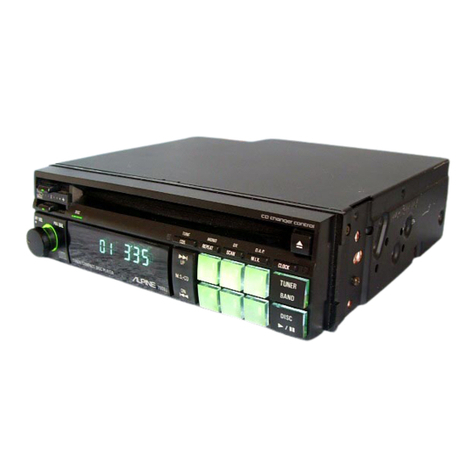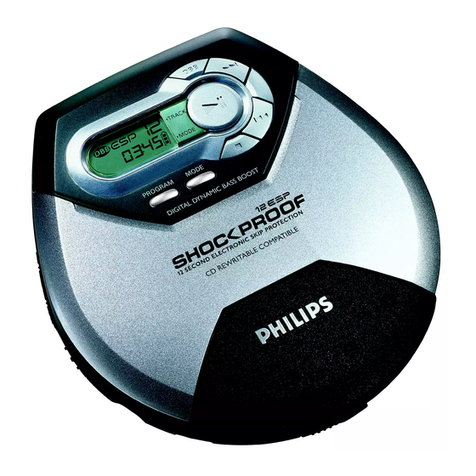RF I-V Amp(I-1) and RF I-V Amp (I-2) are converted to voltage (via
internal resistance of 58k½) from the current of PD1 (A+C) and
PD2 (B+D):
These voltages are added by the RF summing amplifier.
The signal (A+B+C+D) is applied to RFO (No.2 terminal)
RF output voltage is calculated as follows :
FOCUS ERROR Amp AMPLIFIES the difference
between RF I-V Amp (1) output (A+C) and RF I-V Amp (2) output (B+D)
These two signals are supplied to (-) and (+) input terminals of the
FOCUS ERROR Amp. The FOCUS ERROR signal resulting from this
difference voltage is applied to FE (Terminal No. 57).
The FE output voltage of this low frequency component varies according
to {(A+C) - (B+D)}.
VFE is calculated as follows:
VFE=(R2/R1) X (V2-V1) = 5.4(V2-V1)
This FOCUS ERROR voltage is sent to FOCUS SERVO.
When FS3 is ON, high-frequency gain decreases (time constant is set by pin17, pin19, and capacitor connected to
internal resistance). The capacitor between pin18 and GND sets the time constant to pass low freqencies in PLAY
mode.
The maximum frequency of focus phase compensation is inversely proportional to the resistance connected to pin 7.
Focus search peak is about 1.1 Vp-p, and is inversely proportional to the resistance connected to pins 22,23
(if this resistance changes, the peak of track jump and sled kick change). The inversion input of FZC comparator is set
to 5.7% of the difference between Vcc and VC (pin69) {(5.7% x (Vcc-Vc)}.
Note : If the resistance connected to pin 7 changes, the phase compensation peak of focus,tracking,sled servos change.
At the same time, Ôop-ampÕ dynamic range and offset voltage also change.
VRF = -R3 x (iPD1 + iPD2)
= -R3 x (V1/R1+ V2/R2)
= -R3 x ( + )
= x (V1+ V2)
R3
10K
V1
10K
V2
10K






